:format(jpeg)/cloudfront-us-east-1.images.arcpublishing.com/tgam/ZB2Q3PQELZHV3PV6OFJ43BNB4E.jpg)
Shortly after they went to sleep on their stone floor at 11 p.m. on Sept. 8, farmers Brahim and Fatima Benider were awakened by a powerful lurching motion, followed by an ominous groaning noise from the limestone cliffs that tower above their stone-and-mud village high in Morocco’s Atlas Mountains. They knew what was about to happen.
“I woke up instantly and ran,” said Brahim, 37. His wife Fatima, 36 and pregnant, had already instinctively picked herself off the floor and run down the front steps and through the darkness.
They reached the other side of the village’s one-lane road just as several automobile-sized boulders thundered down the hillside below the cliffs and crashed through their home. One flattened their small barn, instantly killing their donkey, several chickens and most of the black sheep they breed for a living. Others crushed their house’s roof and most of its walls. They could hear, up the road, other houses collapsing and people screaming as they fled.
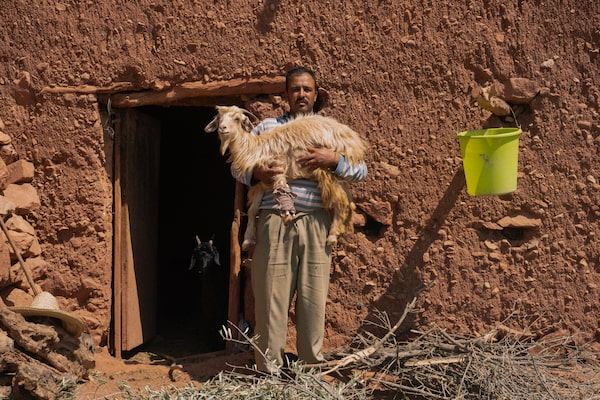
Brahim Benider holds one of his surviving sheep in Taddart, a village of about 1,200 people southwest of Marrakesh. The quake killed many of Mr. Benider's other animals.
In a stony clearing by the road, joined by a dozen other members of their extended family, including several children and two pregnant women, they huddled together in the chilly darkness.
As dawn revealed the destruction wrought by the magnitude-6.9 earthquake, which killed at least 3,000 people across their mountainous region and caused serious damage across much of central Morocco, they expected the army, or the government’s medical services, to arrive at any moment. The poor villagers here had faith in the Moroccan state, a comparatively prosperous North African kingdom that over the previous decade had given this remote village its lone road, cellphone connections and electricity.
But by Tuesday night, four days after the quake, the road had brought them only blankets, a solar-powered light and some tins of sardines from private charities, including non-governmental organizations from Saudi Arabia and Israel. The next day Moroccan volunteers brought them a gas cookstove and some plastic sheeting to use for tents.
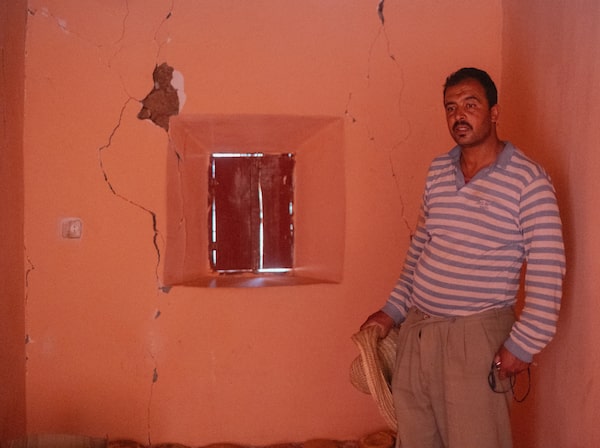
Mr. Benider surveys the damage to his house.
By Wednesday afternoon, there had been no sign of Moroccan state assistance – no army trucks on the road, no helicopters in the air – in their roadside clearing. Nor was any seen in the nearby village of Taddart, whose entire population of 1,200 was shivering under the stars in the flood-prone valley beneath the ruins of their homes, their school and their place of worship.
For many residents, the only protection from the elements a week after the quake was plastic feed bags stitched together and held up with sticks.
Mr. Benider said he felt blessed by God, since his entire family had lived. But he and his neighbours felt badly let down by their king.
“I pray for the King, and I ask for God’s blessings for him,” Mr. Benider said as he gathered sticks in the ruins of his house to prop up the plastic tents. “But now we need him to help us. It is time for him to come to our aid.”
:format(jpeg)/cloudfront-us-east-1.images.arcpublishing.com/tgam/3UNIXIAXC5DBTJMCSG5N5GYVSE.jpg)
:format(jpeg)/cloudfront-us-east-1.images.arcpublishing.com/tgam/JQGMRBVHRNF3FFIXEBUFJV5NLA.jpg)
:format(jpeg)/cloudfront-us-east-1.images.arcpublishing.com/tgam/GQTWLM45AZGWNGUPLB3W7SUIDQ.jpg)
:format(jpeg)/cloudfront-us-east-1.images.arcpublishing.com/tgam/UQ6BEA6WFFOWXPSXJJLGB7HECU.JPG)
:format(jpeg)/cloudfront-us-east-1.images.arcpublishing.com/tgam/2KMG6VSTYNIHZKLAFR5HTXX6EE.jpg)
But King Mohammed VI, 60, was not seen or heard from for days after the earthquake – and his first actions were to limit the amount of aid that could be delivered. Throughout the weekend after the earthquake, the King was silent, reportedly holed up at his mansion in Paris, purchased for €80-million in 2020, where he now spends most of his time. Though Marrakesh is only a 90-minute flight from Paris, he did not appear there until Tuesday, when he visited a hospital and made a brief statement.
In one of his first acts, he authorized only aid teams from Britain, Spain, Qatar and the United Arab Emirates to enter Morocco – an explicit snub to disaster-aid superpowers France and the United States, which are typically able to mobilize vast resources quickly. Canada was also turned down. Tensions have been rising between France and Morocco, which was occupied by the French military during much of the 20th century – part of a recent increase in anti-French animosity across northwest Africa. On Tuesday, French President Emmanuel Macron attempted to dampen the controversy with a speech asking that relations be normalized “out of respect for all involved.”
Very little happens in Morocco without the King’s explicit assent. And many observers believe that major segments of the army and other national agencies were not fully mobilized until many days after the earthquake because he had not convened his cabinet to order them into duty or provided a response plan.
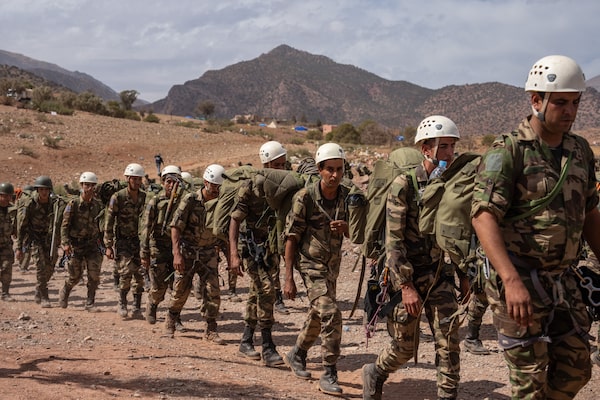
Moroccan troops prepare to embark on relief missions in the mountains in Talat N'Yaaqoub.Carl Court/Getty Images
On Wednesday, there were hundreds of soldiers barracked at a high school in Majjat, a three-hour drive from the village where the Benider family waited. A young soldier said he had been called up only on Tuesday night, and wouldn’t head into the mountains until Thursday. The Globe and Mail is not naming him because he was not authorized to speak publicly.
(Medical assistance was much quicker to arrive in villages that suffered large numbers of deaths, including some not far from Taddart where as many as 70 per cent of residents were killed.)
On Thursday afternoon, the King finally convened his cabinet and issued a statement announcing that generous financial aid would be made available to victims of the quake – about $4,000 per affected household. The announcement also promised larger amounts, for rebuilding, to the 50,000 families whose houses had been destroyed, partly funded by a personal donation of $132-million from the King himself. But it wasn’t clear when this money would be delivered, or how the government would determine eligibility.
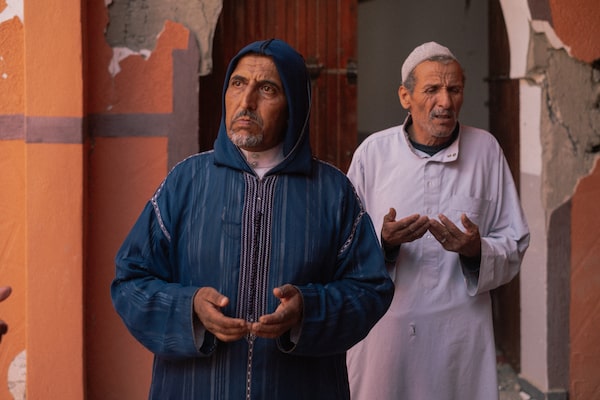
Ahmad Ahnaich, imam of Taddart, recites dua, a prayer of supplication, in front of the damaged mosque.
For the Benider family and their neighbours huddled beneath the ruins of their village, this promise was almost meaningless. Their moment of need is right now. These families survived for centuries without contact with the state. They built their homes by hand; their requirements are those of immediate survival.
“What we need most right now is real tents, and then some kind of shelter that will get us out of this valley and under some kind of roof, even a plastic one,” said Ahmad Ahnaich, the village’s imam.
“Because in a few weeks it will be freezing overnight, and we can’t survive in this valley if the rains come.” (During the infrequent but heavy rains of the autumn, the valley turns into a violent floodplain, which is why the villagers’ houses are built beneath the cliffs.)
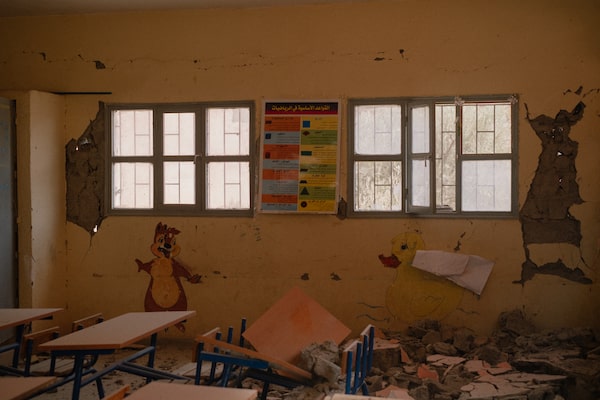
Taddart's school, one of two government-built structures in the village, is in ruins.
Many villagers faced a bitter realization this week that the Moroccan state had long neglected their safety in its infrastructure priorities.
Although some of the village’s oldest hand-built stone houses suffered only minor damage, the town’s two government-built structures – its single-room public school and its mosque, both constructed in the 1990s – were uninhabitable ruins. Huge fractures ran down the lengths of their outer walls, revealing structures consisting of cheap blocks joined by chalky lime mortar, with no metal or concrete reinforcement. No building standards or systems of inspection are observed in this disaster-vulnerable part of the country.
“We don’t get anything from the government or the army – what we are grateful for is the volunteers from the city who are keeping us fed and warm,” Mr. Ahnaich said, as a team of volunteers from the Yusr Foundation, a Moroccan charity, unloaded neat piles of family-sized supplies of beans, fish, blankets and drinking water in the town square.
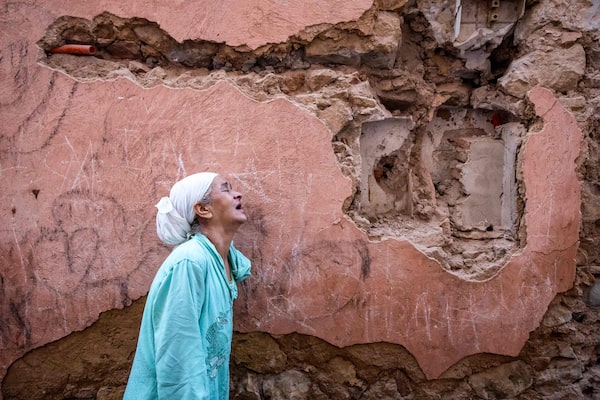
A woman reacts emotionally in front of her earthquake-damaged house in the old city in Marrakesh, known as the medina. Marrakesh is Morocco's fourth largest city.FADEL SENNA/AFP via Getty Images
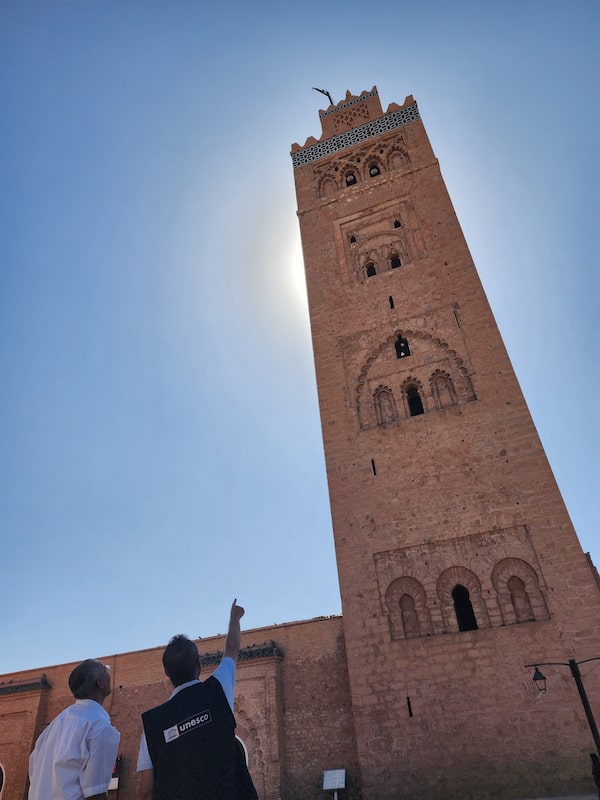
UNESCO officials inspect damaged sites in the medina, which is a World Heritage Site.UNESCO/AFP via Getty Images
As the earthquake’s aftermath approached the one-week mark, the absence of the state became deeply worrying to the many thousands of people forced to sleep outside in far more populated urban areas.
In the outskirts of Marrakesh, hundreds of makeshift tents have sprung up around public-housing apartment blocks whose residents risked the elements to escape their damaged dwellings. Parks in the centre of the city are filling up with similar tents.
The frustrations of quake victims boiled over on Wednesday in the city of Tahanaout, on the edge of the epicentre, where there was an angry protest rally after government authorities ordered campers to move back into their buildings, regardless of the level of damage.
This anger was also grimly visible in the most famous parts of Marrakesh. While the earthquake killed few people in the city, many buildings in the Medina – the city’s 1000-year-old central marketplace – were damaged or terminally fractured, including synagogues in the historic Jewish district.
On Thursday, hundreds of residents of the Medina’s buildings, mostly poor merchant families, slept, ate and tended to their children on blankets in the sun-blasted plaza outside the Medina, as the spice market continued to operate only metres away. An Israeli charity showed up with van loads of food and blankets, which were quickly seized by young men in a matter of minutes, out of reach of most families.
“There has been no help in six days, only officials telling us to leave,” said soup vendor Aicha Hadda, seated in a laneway with her husband and small children. The family was forced to flee their destroyed second-floor apartment. A lone soldier patrolling the plaza, whom The Globe is not naming because she was not authorized to identify herself publicly, explained that her only assignment there was to urge residents to move to a government-provided camp at the edge of town.
Ms. Hadda and her neighbours said they fear such a move would become permanent, and that their apartments would never be replaced. That is not an unreasonable concern: the city’s tourism authority has reportedly long been interested in clearing out the district’s low-income residents to make way for a more commercialized market of tourist-friendly upscale businesses.
“There’s a big crack through our home, so we can’t even walk into it,” said Amina Elourardi, who tried to keep her small daughter occupied amid a seething throng of people reaching for aid packages, “but we don’t trust anyone right now, so we can’t walk away from it.”
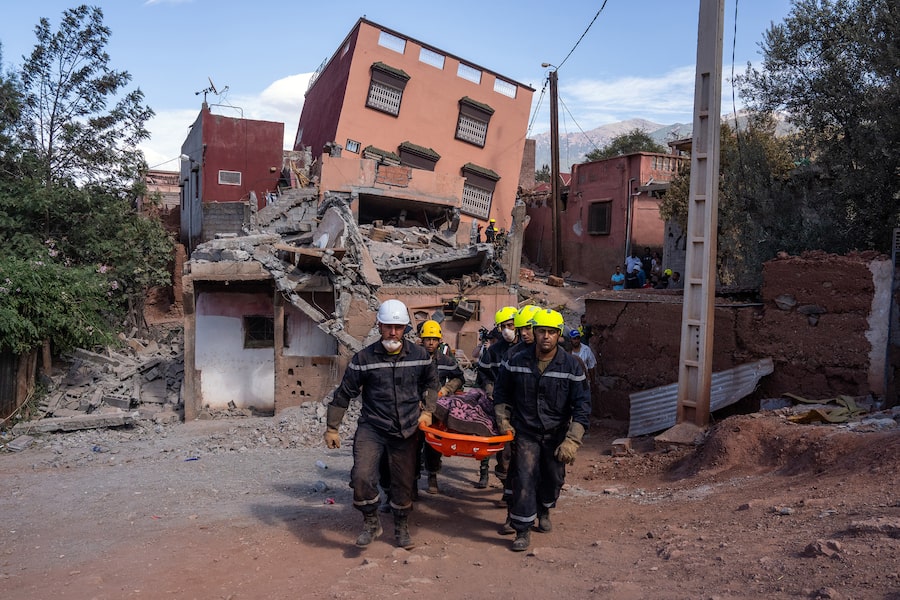
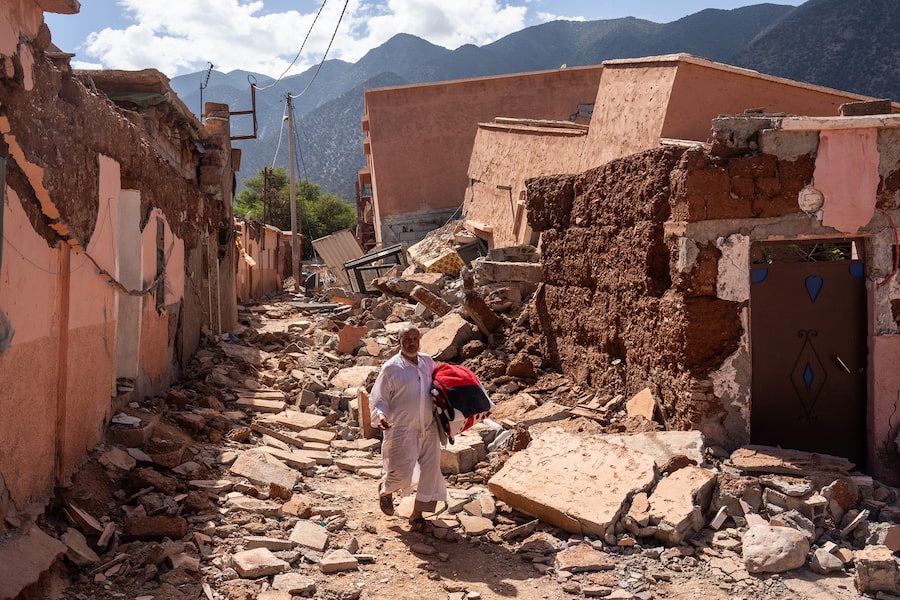
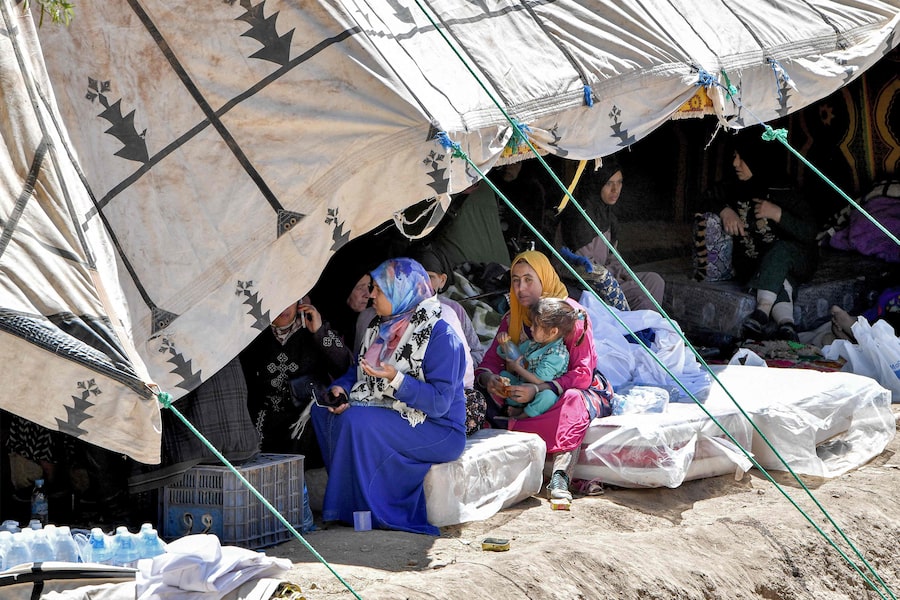
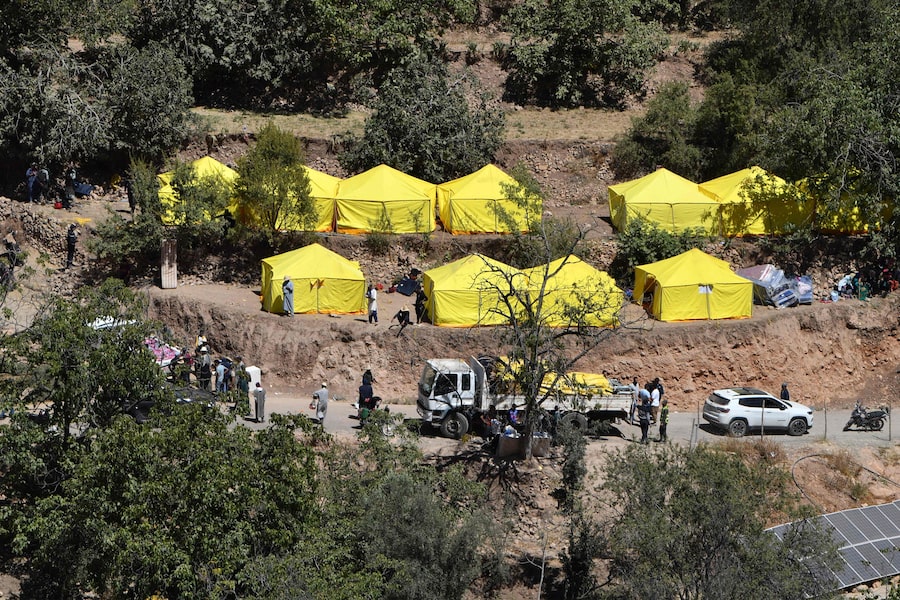
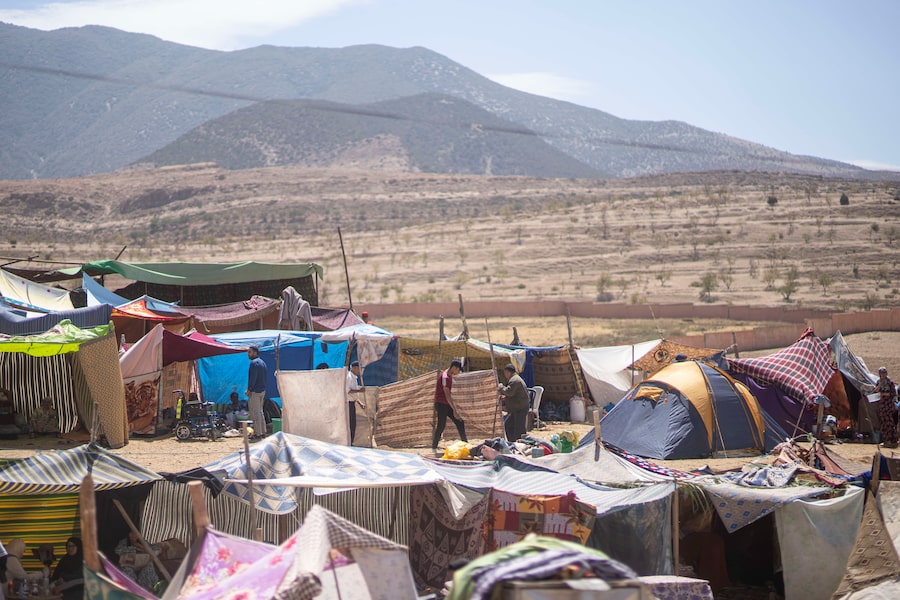
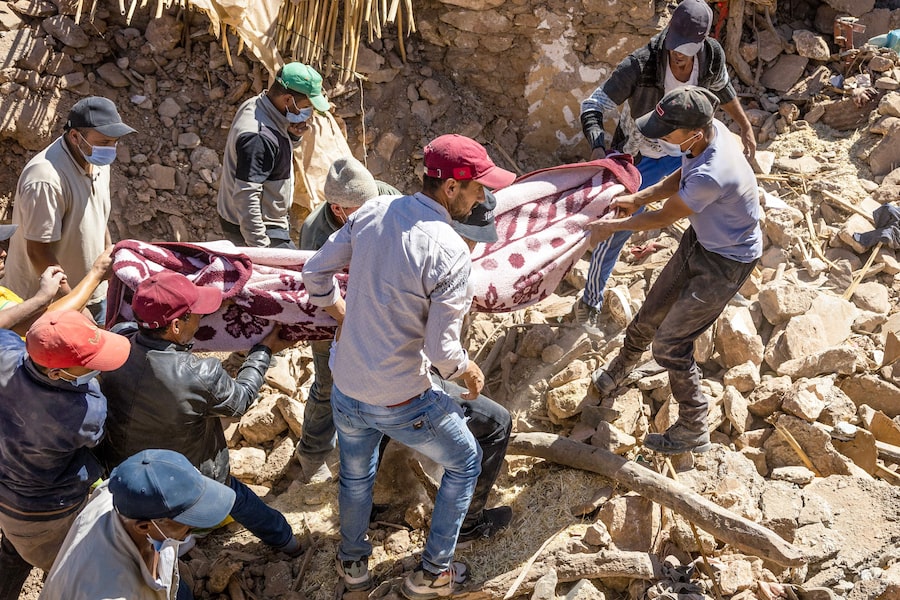
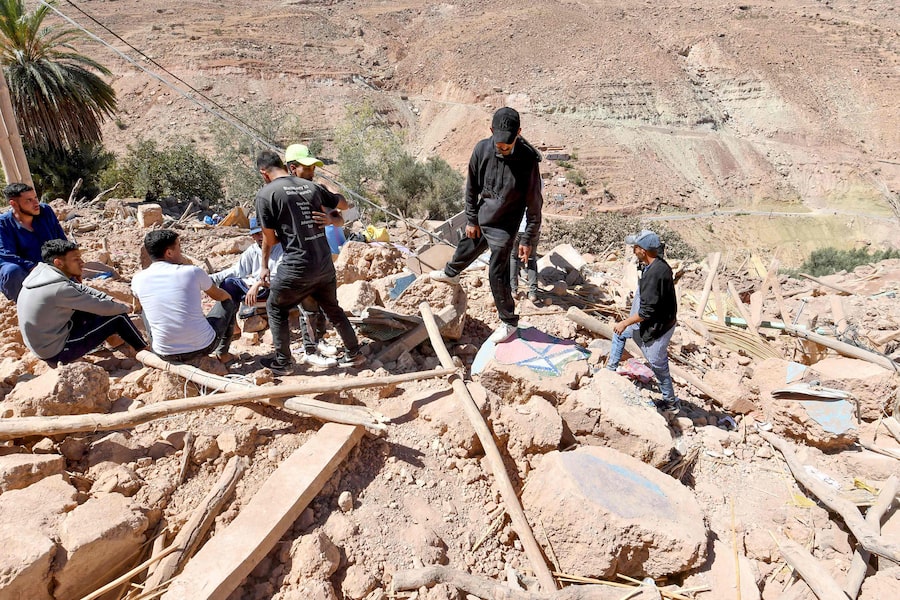
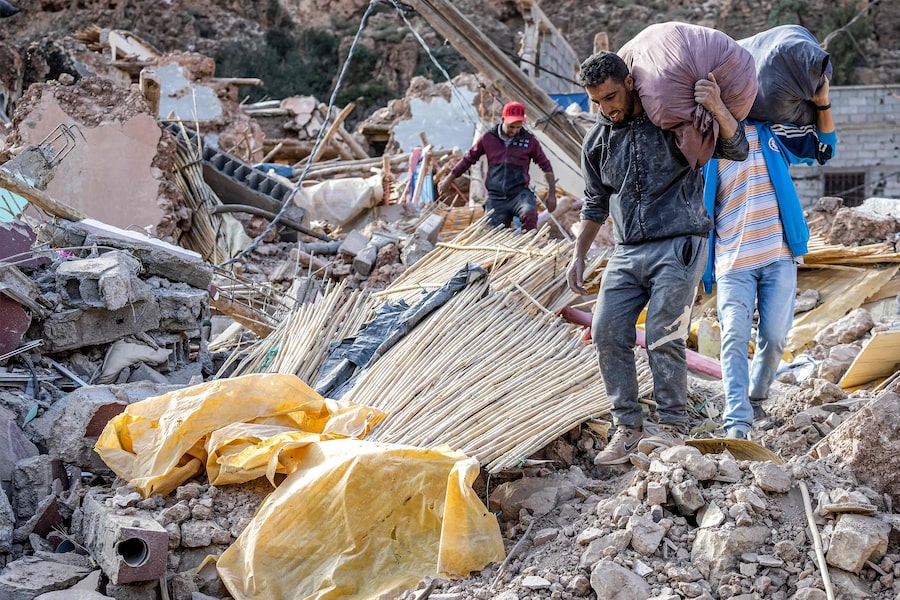
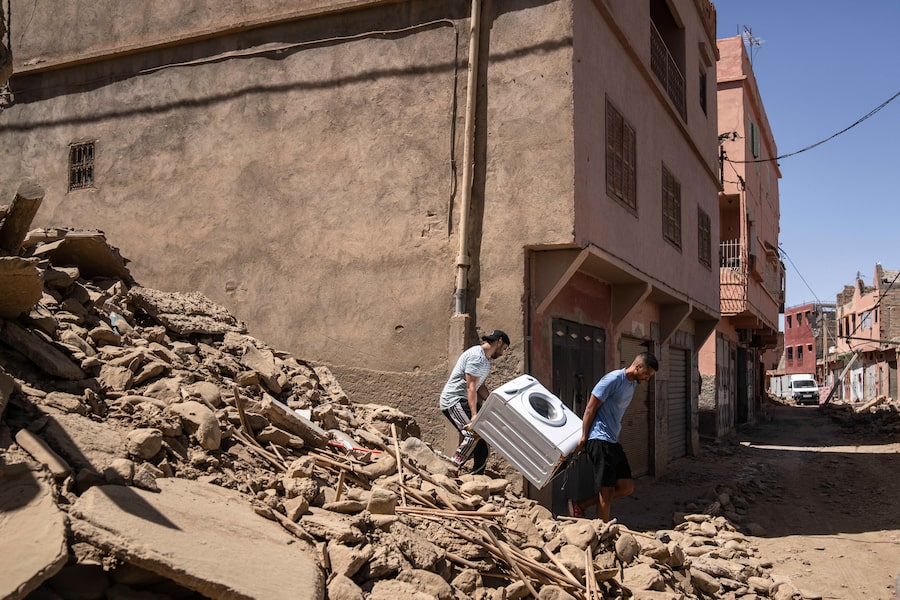
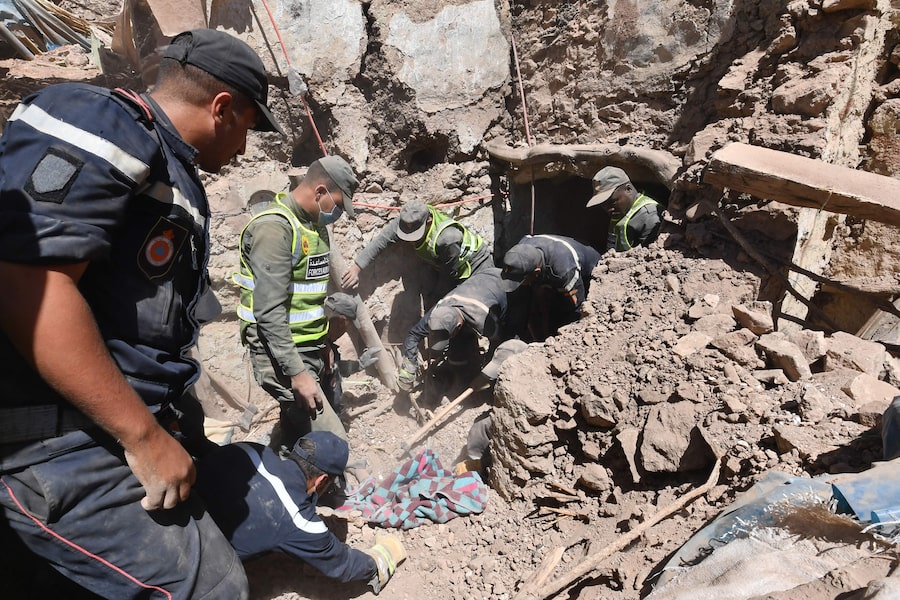
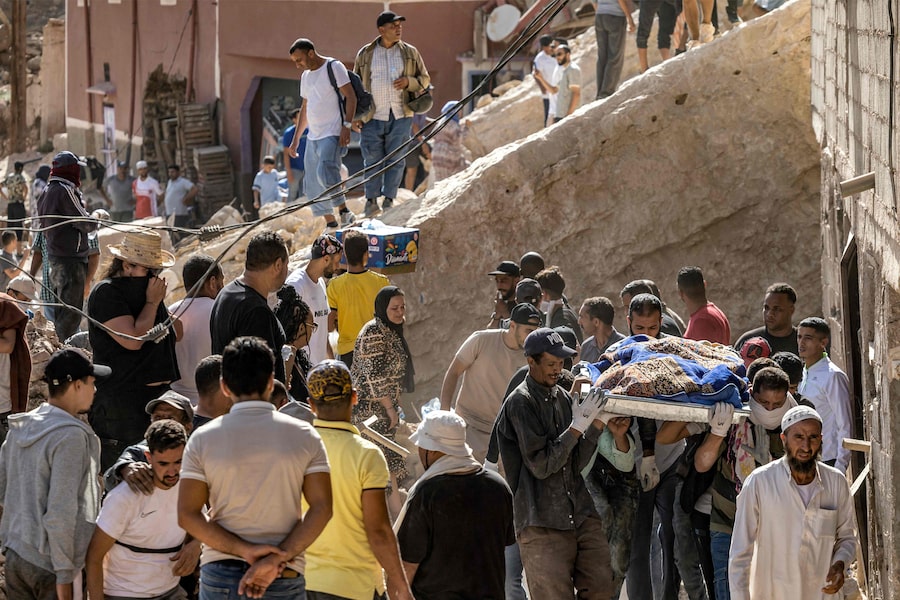
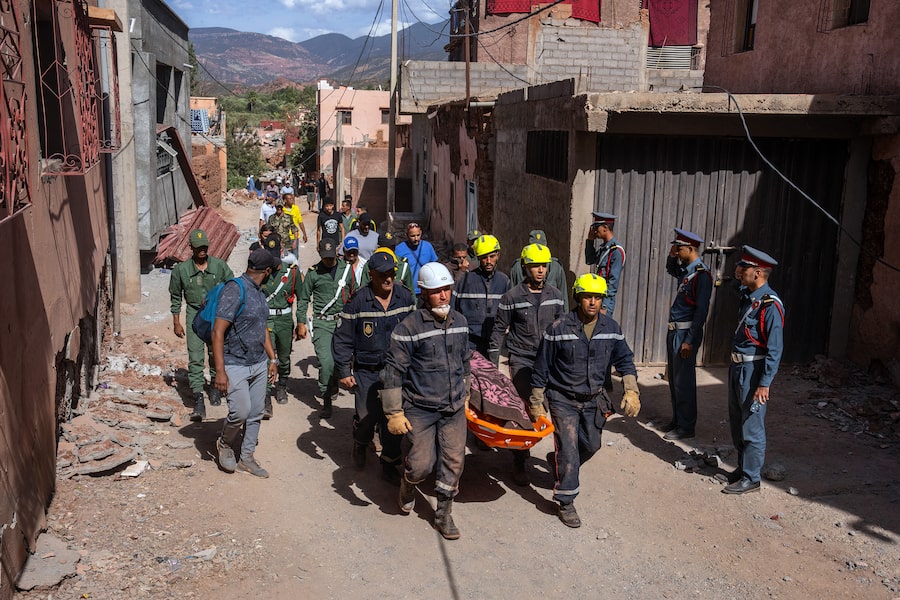
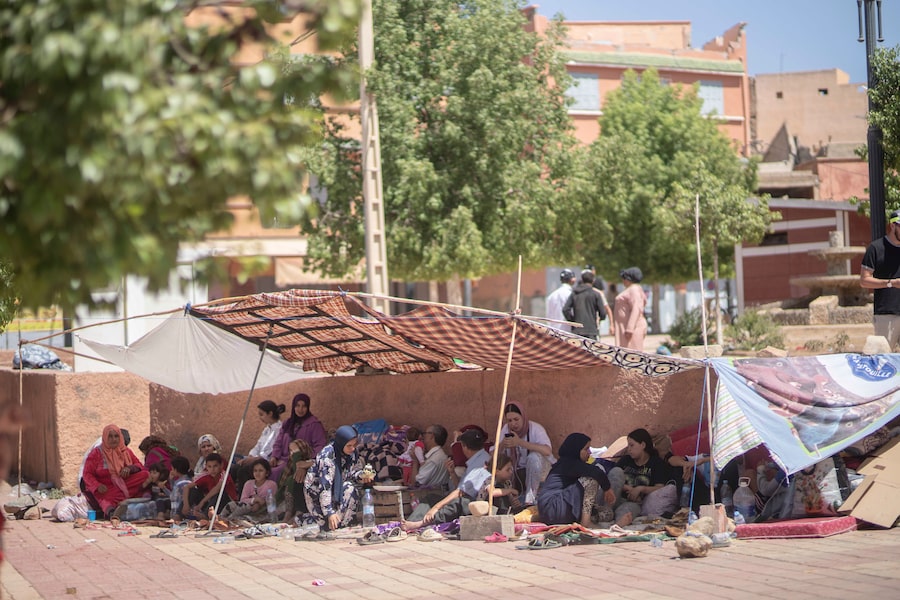
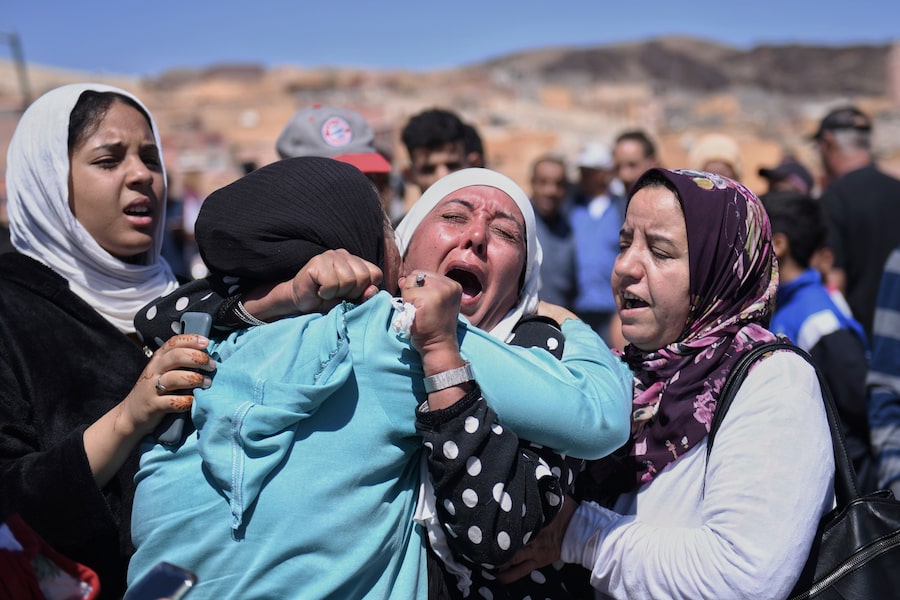
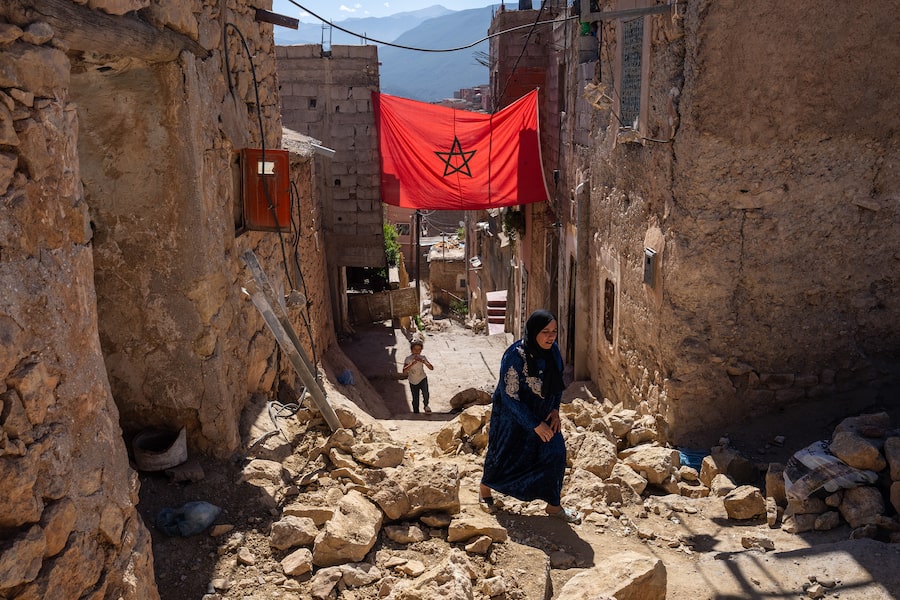
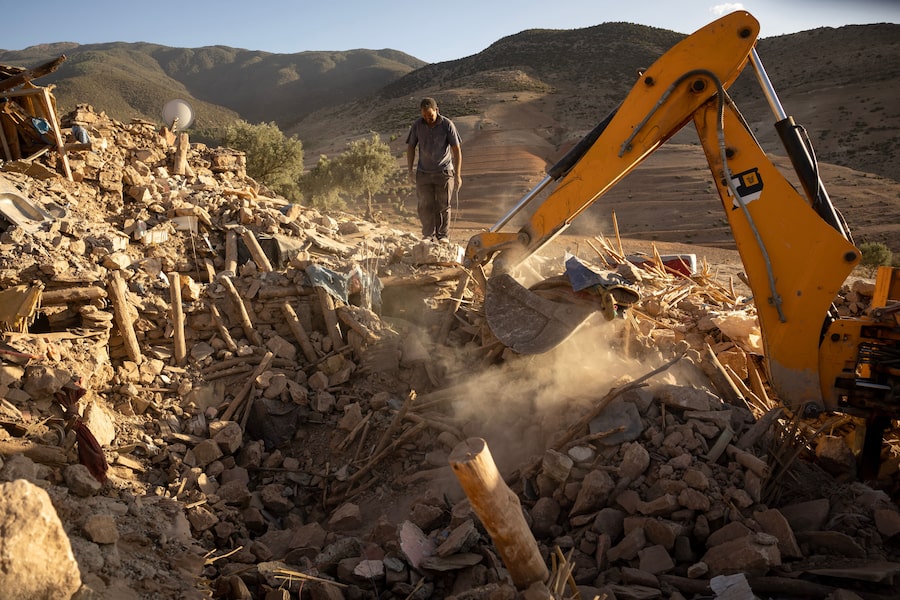
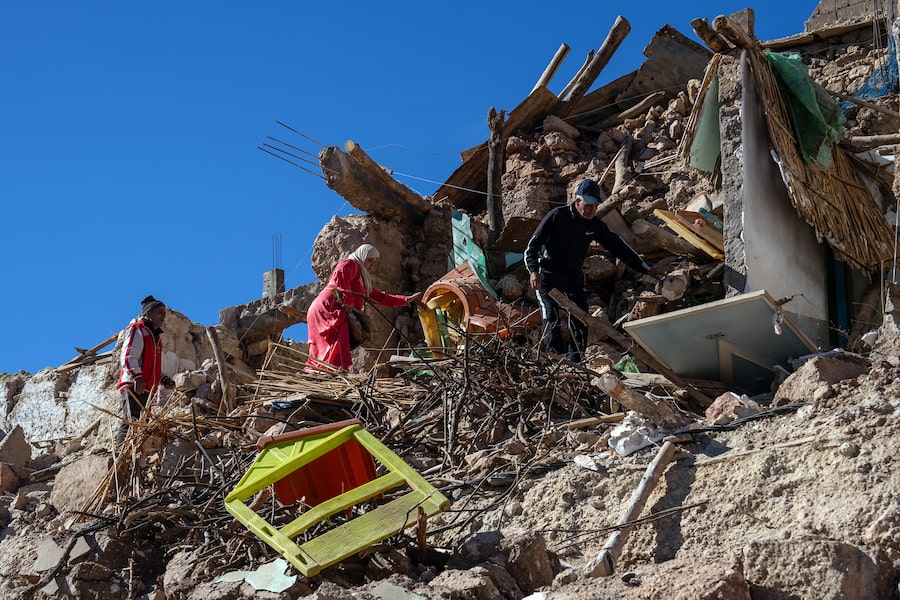
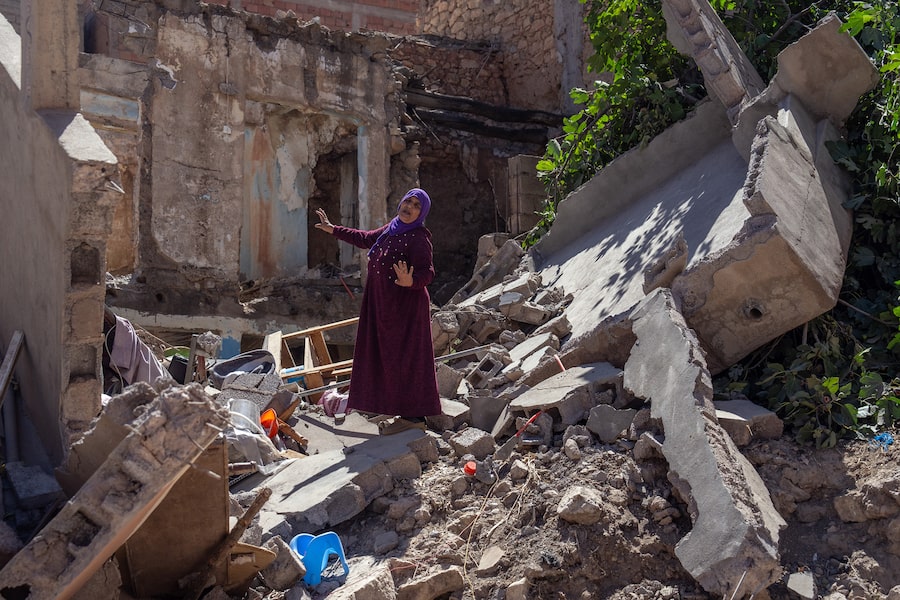
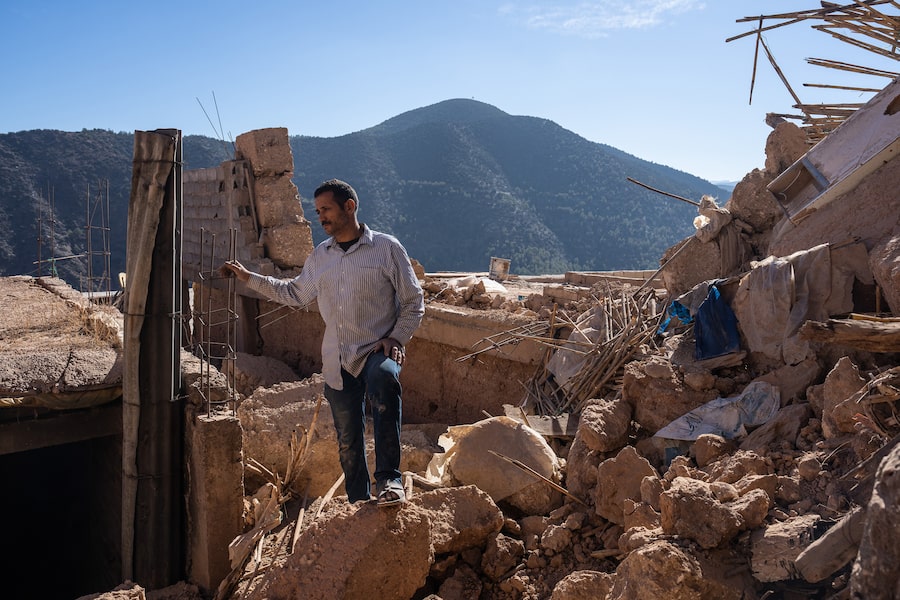
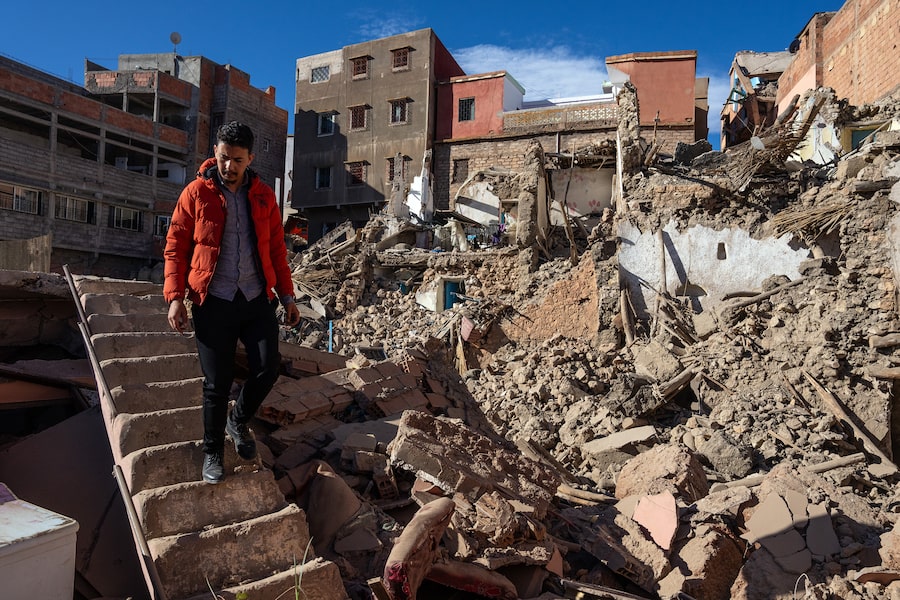
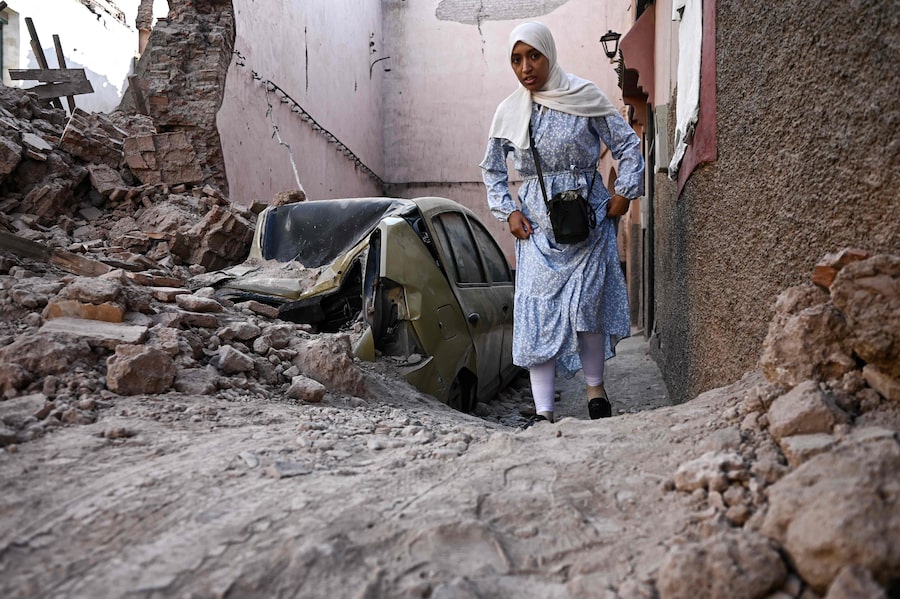
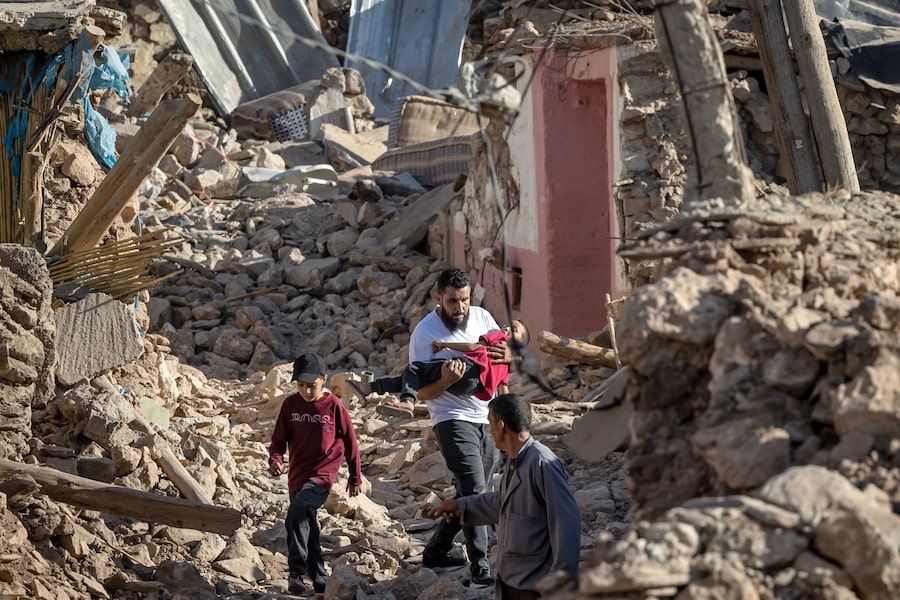
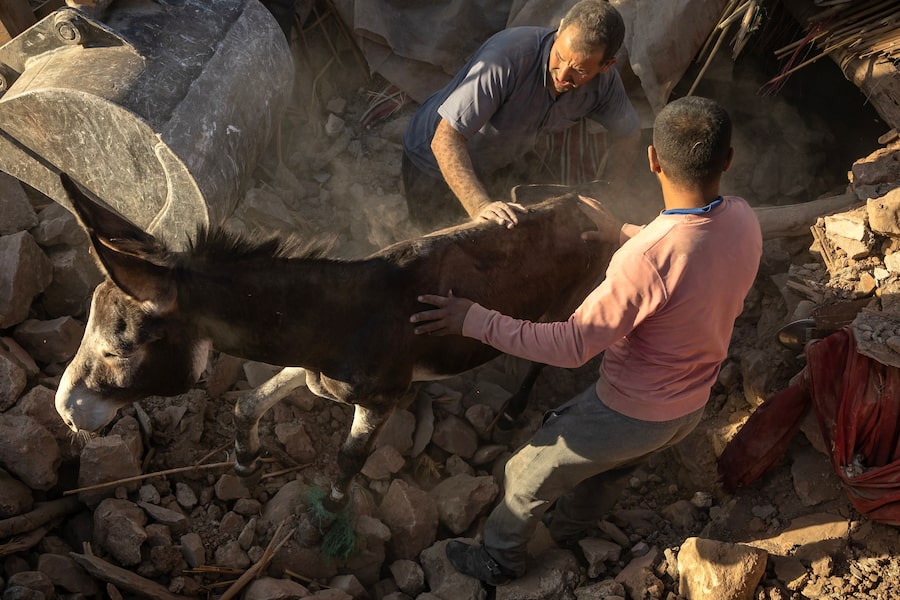
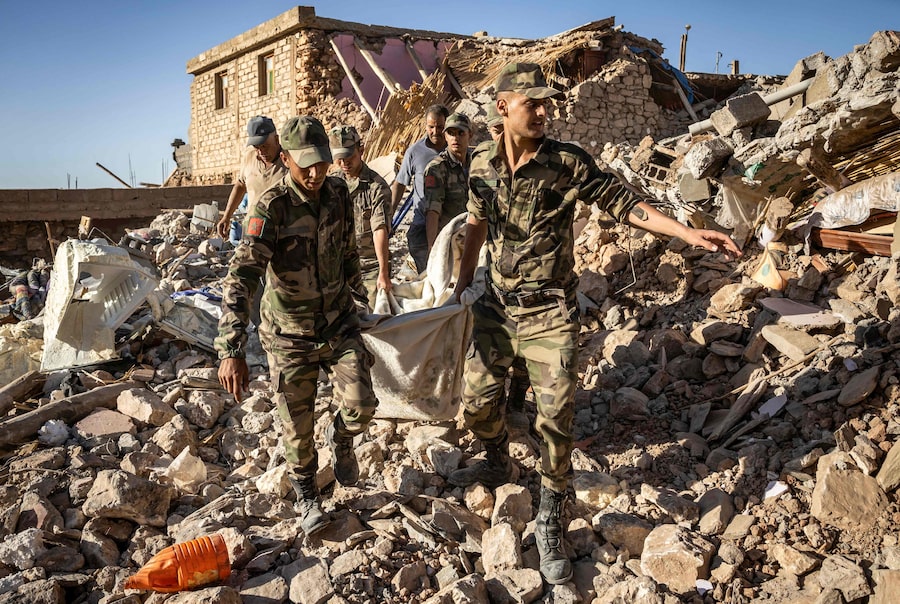
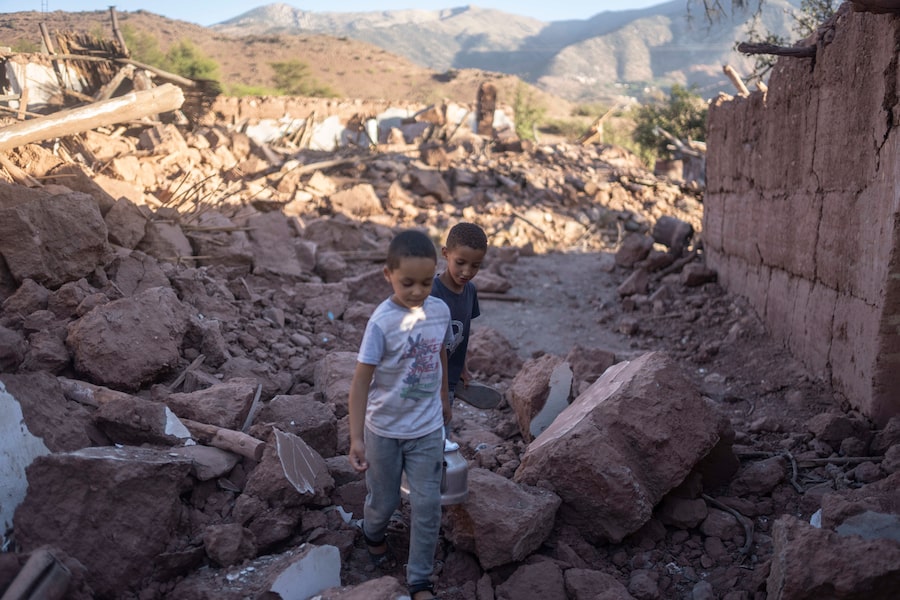
 Doug Saunders
Doug Saunders